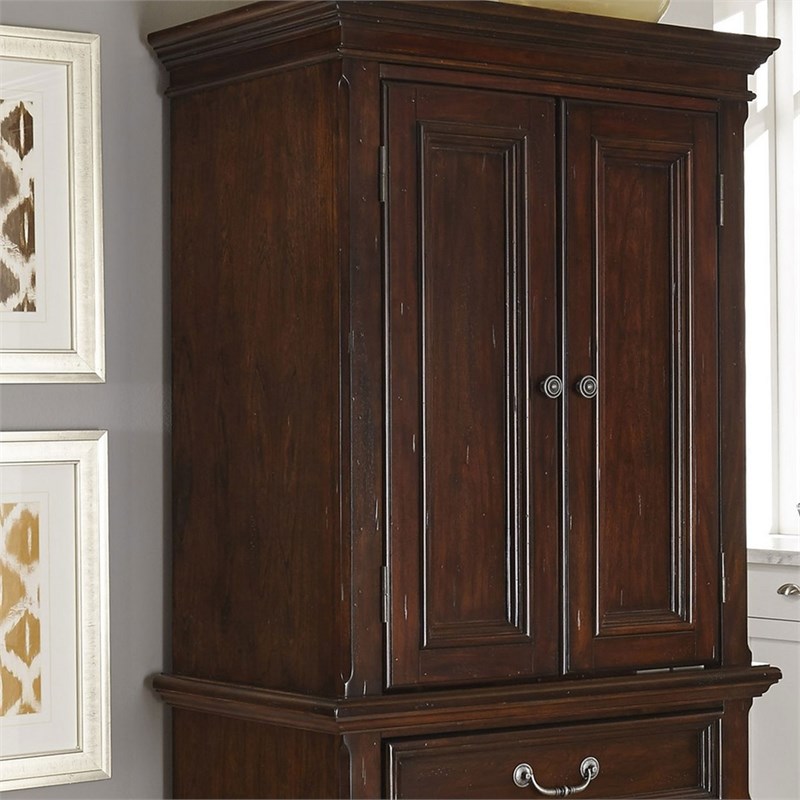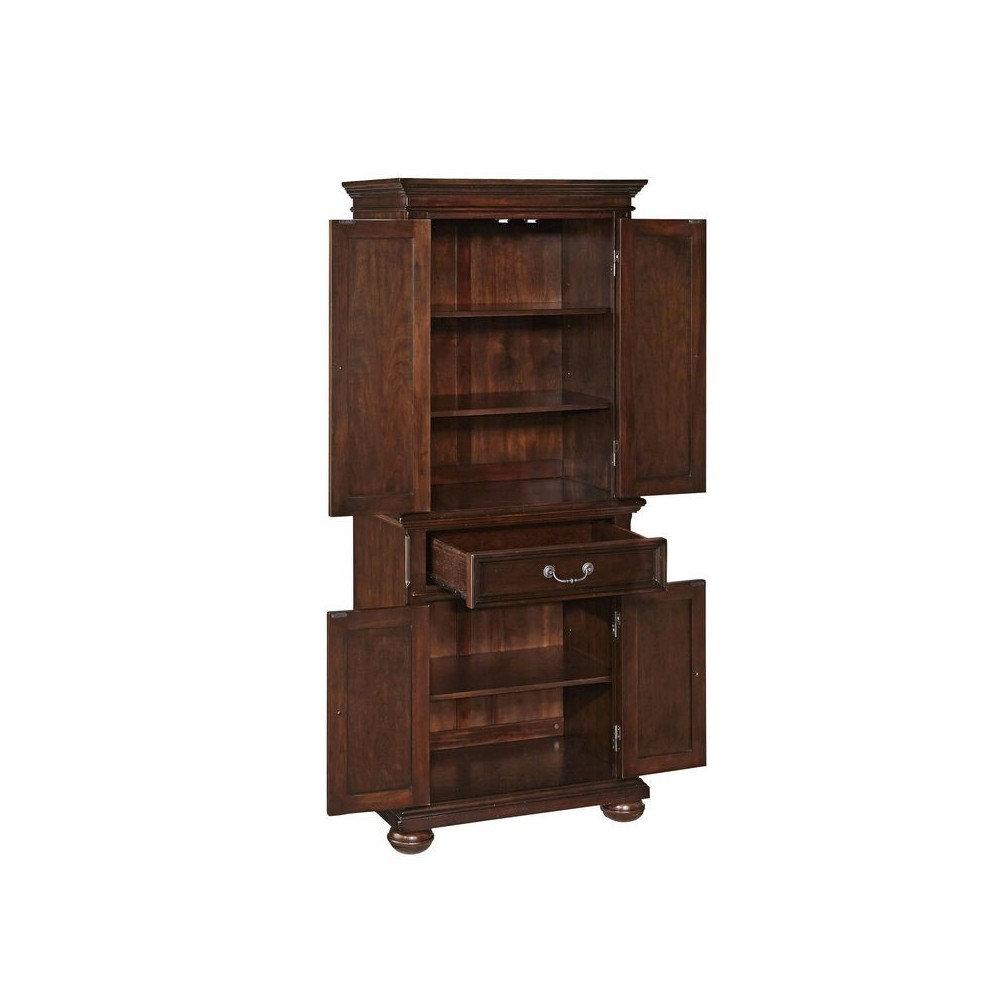Colonial Classic Pantry Cabinet Styles

The colonial pantry cabinet, a staple of traditional American homes, boasts a rich history and a timeless aesthetic. Its evolution reflects the changing styles and needs of different eras, showcasing the craftsmanship and design sensibilities of the time.
Historical Origins and Evolution
The origins of the colonial pantry cabinet can be traced back to the 17th and 18th centuries, when European settlers began establishing homes in the American colonies. These early cabinets were typically simple, functional pieces made from readily available materials such as pine and oak. They served a practical purpose, providing storage for food, utensils, and other household necessities.
As the colonies developed and trade flourished, colonial pantry cabinets became more elaborate in design. The influence of European styles, particularly those of the English Georgian and French Rococo periods, is evident in the refined details and craftsmanship of later colonial pantry cabinets. The emergence of skilled cabinetmakers and the availability of imported materials, such as mahogany and walnut, allowed for the creation of more ornate and sophisticated pieces.
Design Features of Different Styles
Colonial pantry cabinets can be categorized into several distinct styles, each reflecting the prevailing design trends of its era.
Federal Style
Federal-style pantry cabinets, popular in the late 18th and early 19th centuries, are characterized by their clean lines, simple ornamentation, and emphasis on symmetry. They often feature fluted pilasters, delicate moldings, and brass hardware.
Georgian Style
Georgian-style pantry cabinets, prevalent in the mid-18th century, are known for their more robust and ornate design. They often feature bold carvings, elaborate moldings, and a heavier use of mahogany.
Victorian Style
Victorian-style pantry cabinets, popular in the mid-19th century, are characterized by their opulent and often whimsical designs. They may feature elaborate carvings, stained glass, and a wide range of materials, including exotic woods and metal accents.
Key Elements of a Classic Colonial Pantry Cabinet
Several key elements define a classic colonial pantry cabinet, regardless of its specific style.
Hardware
Brass hardware is a hallmark of classic colonial pantry cabinets. This includes hinges, knobs, and pulls, which are often hand-forged or cast in traditional designs.
Materials
Traditional colonial pantry cabinets are typically constructed from high-quality hardwoods such as oak, maple, cherry, and mahogany. These woods are known for their durability, beauty, and ability to age gracefully.
Construction Techniques
Classic colonial pantry cabinets are often built using traditional joinery techniques, such as mortise and tenon joints, dovetail joints, and hand-cut dovetails. These techniques ensure the strength and longevity of the cabinet.
Examples of Famous Colonial Pantry Cabinets
Several famous colonial pantry cabinets stand as testaments to the artistry and craftsmanship of their time.
The Mount Vernon Pantry Cabinet
Located at George Washington’s Mount Vernon estate, this pantry cabinet is a prime example of 18th-century Georgian design. It features elaborate carvings, a rich mahogany finish, and a sophisticated layout that reflects the needs of a prominent household.
The Boston Museum of Fine Arts Pantry Cabinet
This 18th-century Federal-style pantry cabinet is known for its elegant simplicity and graceful proportions. It features fluted pilasters, delicate moldings, and brass hardware, showcasing the refined aesthetic of the Federal period.
Functionality and Design Considerations

A colonial pantry cabinet, while rooted in traditional aesthetics, can seamlessly integrate modern functionality. By incorporating contemporary features, it can become a highly efficient and user-friendly storage solution for the modern kitchen.
Storage Solutions within a Colonial Pantry Cabinet
The primary purpose of a pantry cabinet is to provide organized storage for various food items and kitchen essentials. Effective storage solutions are crucial for maximizing space and ensuring easy access to all items.
- Adjustable Shelves: Adjustable shelves allow for flexible storage configurations to accommodate items of different heights. This ensures that all available space is utilized effectively, regardless of the size and shape of the stored items.
- Pull-Out Drawers: Pull-out drawers provide easy access to items stored at the bottom of the cabinet, eliminating the need to reach deep into the cabinet. They are particularly useful for storing smaller items like spices, baking supplies, or utensils.
- Built-in Organizers: Built-in organizers, such as dividers, baskets, and spice racks, help to create a structured and organized storage system within the cabinet. This eliminates clutter and makes it easier to locate specific items.
Materials Used in Colonial Pantry Cabinet Construction
The choice of materials for a colonial pantry cabinet significantly impacts its durability, aesthetics, and cost.
- Wood Types: Hardwoods like oak, maple, cherry, and walnut are commonly used for colonial pantry cabinets due to their durability, natural beauty, and resistance to scratches and dents. These woods can be stained or painted to achieve a desired finish.
- Finishes: Various finishes, such as stains, paints, and varnishes, can be applied to the wood to enhance its appearance and provide protection. Stains allow the natural grain of the wood to show through, while paints provide a solid color. Varnishes create a protective layer that resists moisture and scratches.
- Hardware: Hardware, including hinges, knobs, and pulls, plays a crucial role in the functionality and aesthetics of the cabinet. Colonial-style hardware, often featuring brass or bronze accents, complements the traditional aesthetic of the cabinet.
Comparison of Materials for Colonial Pantry Cabinet Construction
| Material | Pros | Cons |
|---|---|---|
| Hardwoods (Oak, Maple, Cherry, Walnut) | Durable, aesthetically pleasing, natural beauty, can be stained or painted. | Higher cost, requires maintenance, susceptible to moisture damage if not properly sealed. |
| Softwoods (Pine, Fir) | Lower cost, lighter weight, easy to work with. | Less durable, prone to scratches and dents, may not be as aesthetically pleasing as hardwoods. |
| Medium-Density Fiberboard (MDF) | Affordable, smooth surface, easy to paint. | Not as durable as wood, can be prone to moisture damage, not suitable for high-traffic areas. |
Incorporating a Colonial Classic Pantry Cabinet into Modern Homes: Home Styles Colonial Classic Pantry Cabinet

A colonial classic pantry cabinet, with its timeless elegance and practicality, can seamlessly integrate into modern homes, adding a touch of history and sophistication to contemporary kitchen designs. This harmonious blend of styles can be achieved through careful planning, strategic placement, and thoughtful styling.
Blending Classic Charm with Contemporary Aesthetics
Integrating a colonial classic pantry cabinet into a modern kitchen involves finding a balance between the traditional and the contemporary. This can be achieved by selecting a cabinet that complements the overall design scheme while maintaining its classic charm.
- Contrasting Colors and Materials: A colonial pantry cabinet with its rich wood tones can create a striking contrast against a backdrop of sleek, modern cabinetry in white or light gray. This juxtaposition of colors and materials adds visual interest and depth to the kitchen.
- Simple Lines and Geometric Shapes: To maintain a modern aesthetic, choose a colonial pantry cabinet with simple lines and geometric shapes. Avoid ornate carvings or overly elaborate details that might clash with the contemporary style of the kitchen.
- Open Shelving and Glass Doors: Incorporating open shelving or glass doors on the colonial pantry cabinet allows for a glimpse of the stored items, creating a sense of openness and visual appeal. This approach aligns with the contemporary trend of showcasing items rather than concealing them behind closed doors.
Styling a Colonial Pantry Cabinet for Different Interior Design Aesthetics, Home styles colonial classic pantry cabinet
The versatility of a colonial classic pantry cabinet allows it to complement a wide range of interior design styles. From traditional to farmhouse, the cabinet can be styled to enhance the existing aesthetic.
- Traditional Style: In a traditional kitchen, a colonial pantry cabinet can be styled with warm, earthy tones and antique accents. Incorporate woven baskets, vintage jars, and antique silverware to create a sense of history and charm.
- Farmhouse Style: For a farmhouse kitchen, embrace the rustic charm of the colonial pantry cabinet by styling it with natural elements. Use galvanized metal containers, linen towels, and wooden cutting boards to create a warm and inviting atmosphere.
- Contemporary Style: In a contemporary kitchen, a colonial pantry cabinet can be styled with minimalist accessories and a focus on functionality. Use clear glass containers, sleek labels, and modern storage solutions to maintain a clean and organized look.
Selecting the Right Size and Scale for Different Kitchen Spaces
The size and scale of a colonial pantry cabinet are crucial considerations for any kitchen. Choosing the right size ensures that the cabinet complements the space without overwhelming it.
- Small Kitchens: For smaller kitchens, a compact colonial pantry cabinet with a narrow footprint is ideal. Opt for a cabinet with multiple shelves to maximize storage space while minimizing visual bulk.
- Large Kitchens: In larger kitchens, a more substantial colonial pantry cabinet can serve as a focal point. Consider a cabinet with multiple doors and drawers to accommodate a larger volume of items.
- Open Floor Plans: In open floor plan kitchens, a colonial pantry cabinet can be used to create a visual separation between the kitchen and dining areas. Select a cabinet with a height that complements the existing cabinetry and a width that provides a sense of visual balance.
Creating a Cohesive and Functional Pantry Area
A colonial classic pantry cabinet can be the centerpiece of a well-organized and functional pantry area. The following tips can help create a cohesive and efficient pantry space:
- Wall-Mounted Storage: To maximize storage space and maintain a clean look, incorporate wall-mounted storage solutions such as shelves, hooks, and organizers around the colonial pantry cabinet. This allows for efficient use of vertical space.
- Lighting: Adequate lighting is essential for a functional pantry area. Install under-cabinet lighting or a pendant light above the colonial pantry cabinet to illuminate the storage space and make it easier to find items.
- Organization and Labeling: Organize pantry items by category and use clear labels to easily identify items. This approach ensures a well-organized pantry and eliminates the need to search for items.
Home styles colonial classic pantry cabinet – While colonial classic pantry cabinets offer a timeless elegance, they might not be the ideal choice for those seeking a more rustic and cozy feel. For a warmer, farmhouse aesthetic, consider farmhouse cherry kitchen cabinets. These cabinets, with their rich wood tones and distressed finishes, can create a welcoming atmosphere reminiscent of a country kitchen.
However, if a more formal and traditional pantry is desired, colonial classic cabinets remain a strong contender.
The colonial classic pantry cabinet, with its timeless charm and practical design, offers a perfect blend of aesthetics and functionality. While its primary purpose is to store food and supplies, it can also serve as a decorative focal point in the kitchen.
For those seeking a more specialized storage solution, an ashley glosco wine cabinet provides a dedicated space for preserving and displaying their favorite vintages. The addition of a wine cabinet can complement the classic style of a colonial pantry, offering a sophisticated touch to the overall kitchen design.
